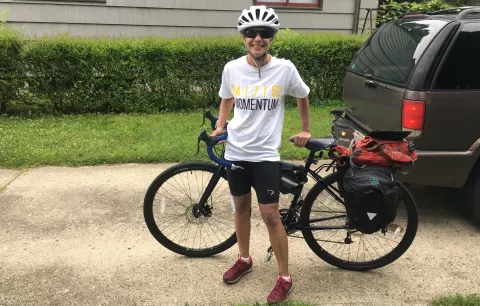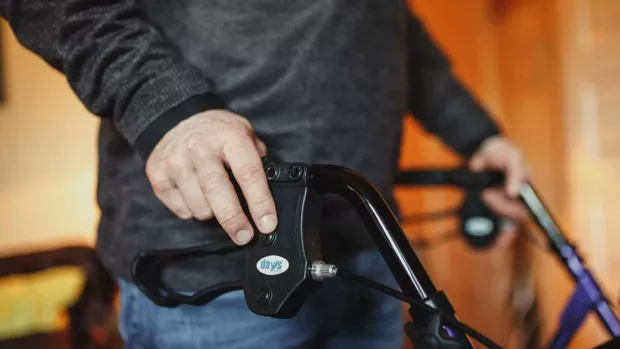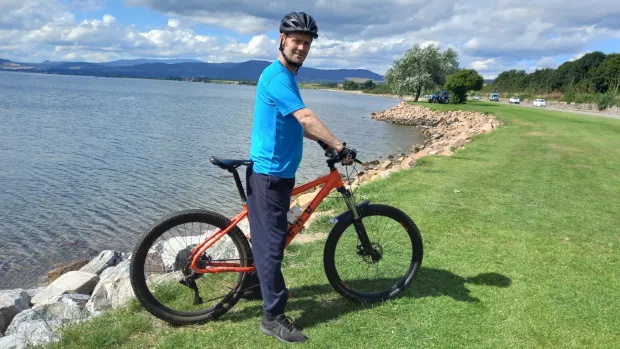
Getting back in the saddle
Returning to cycling after my MS diagnosis has been challenging, but worth it.
Any day on two wheels is a good day, though I haven’t been on a bike in too many months. Before I was diagnosed with relapsing remitting MS last April I was an avid long-distance cycle tourer. I peddled Boston to Maine and Milan to Split.
A 500km trip through the Cotswolds and Wye Valley left me with impossibly numb, weak hands. And this left me unable to button a shirt or pinch open a clothes pin for several weeks. I wrote it off as cyclist’s palsy, but my neurologist says it was my first major relapse. I was most at home in the saddle of my bicycle, but MS has made me unsteady and unable to balance on a bike.
Making changes to suit my needs
Stationary bikes, on the other hand, are perfect for me as I’m unlikely to fall off or tip over. There’s a spin class at the local leisure centre on Monday nights. And I’ve been going for a few months. I was very intimidated walking into an exercise class full of able-bodied athletes with a visible disability. I walk with a stick and a noticeable limp left leg. I thought I’d be an object of curiosity, but whether out of politeness or acceptance, no one has mentioned anything.
My husband, a triathlete, comes with me in case I need help getting on or off the bike. It’s nice to be able to ride with him again. Even if I’m in a lower gear and doing fewer miles than anyone else. I can’t walk fast enough to increase my heartrate. But I can just about pedal hard enough to break a sweat.
I thought the fact that I can’t keep up would be a huge deal. But it turns out no one cares and I’m truly only competing against myself.
Living more mindfully with MS
I’ve made lifestyle changes to help control my MS symptoms. I follow the Overcoming MS programme. And I feel that changes to my diet, reducing stress and my disease modifying therapy, have had benefits for my fatigue and mobility. And research shows that strength and aerobic exercise can help with MS and overall health.
Read more about lifestyle factors and living well with MS
I disclosed my diagnosis to the instructor at the first class I attended. And I told him I’d be doing my own modified version of his instructions. My first goal was just to stay on the bike for the whole 45-minute class.
I foolishly wore my padded shorts and clip-in cycling shoes to that first class. I was able to clip in at the start of class, but my legs were so tired by the end that I couldn’t unclip! My left foot was attached to the pedal and I couldn’t reach to take it off. My husband came to the rescue and was able to help me free my shoe and dismount. That incident really drove home the fact that I’m not the same cyclist I used to be.
I’ve gone from barely completing the class on the lowest gear to adding some resistance and doubling my distance. I have a long way to go before I feel comfortable getting back on a regular bicycle. But I’m glad I’m slowly getting back in the saddle.
Maybe in next week’s spin class, as the pop music blares and I focus on keeping my knees from knocking against each other, I’ll turn the resistance level up a notch.




